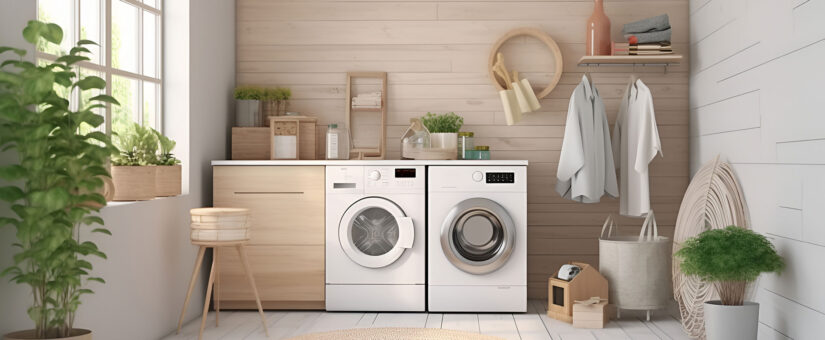
Top-Load vs. Front-Load Washers
Is the Door the Only Difference?
When you’re ready to choose a washing machine, one of the primary decisions you face is choosing between top-load and front-load washers. Both come with their distinct features and benefits, so let’s go over some of the more common determining factors.
1. Cleaning Efficiency
Front-load washers are champions in cleaning power. Their horizontal drum rotation coupled with a tumbling motion effectively lifts and drops laundry, utilizing gravity to remove dirt and stains. This gravity-powered method offers a gentle, yet effective, cleaning action compared to the more vigorous agitation of top-load machines.
2. Price Point
Initial impressions might lead you to believe that top-load washers are more affordable. However, with advancements in technology, many top-tier models of both types now fall within similar price brackets. Always compare models based on features and long-term benefits, rather than just initial cost. Reading several reviews of verified owners is a great way to determine the best choice.
3. Energy and Water Conservation
Front-load washers are the frontrunners in efficiency. They typically consume 10 to 20 gallons less water per cycle than top-load models. This difference leads to significant savings over a year. Moreover, the decreased water usage means less energy is expended to heat the water. Many front-load models even come with the coveted Energy Star certification, meeting stringent criteria set by the EPA. On the downside, some front-load models lack the cleaning power of similarly priced top-loaders. As always, compare customer reviews to determine what best fits your needs.
4. Maintenance Considerations
Every appliance demands some care, but the nature of this care varies. Front-load washers come with a door gasket to avoid leaks, which necessitates periodic drying and cleaning to ward off or remove mold. Leaving the door ajar between cycles mitigates this risk. Conversely, top-load models are less finicky, rarely succumbing to mold or mildew issues.
5. Longevity and Resilience
Both washer types boast a potential lifespan of 10 to 15 years, contingent on factors like build quality and regular maintenance. The simplicity of the top-load design — with fewer moving parts — may translate to fewer headaches down the line. Conversely, front-load washers, with their intricate drum design, might demand a more hands-on approach to upkeep.
6. Aesthetics and Form
Top-load washers generally sport a more compact and functional design, while front-loaders often feature clear, thick doors that let you observe the cleaning cycle. The choice here is subjective, hinging on personal aesthetic preferences and space considerations. It’s also good to remember that front-loaders offer stacking capabilities. That can be a great benefit for households with constrained laundry spaces.
Final Thoughts on Clothes Washers
Both top-load and front-load washers present a solid option for cleaning clothes. If you prioritize energy efficiency and water conservation, a front-load washer might tip the scales in its favor. Choose based on your household’s specific needs, but know that advancements in technology have made both types impressive contenders in the world of home appliances.
River City Appliance works with both styles of clothes washer. Our experience will likely help you determine the best choice for your needs. Please contact us by phone or website to get further information on top loading and front loading clothes washers.
- Posted by River City Appliance Blog
- On January 11, 2024
- 0 Comment




0 Comments